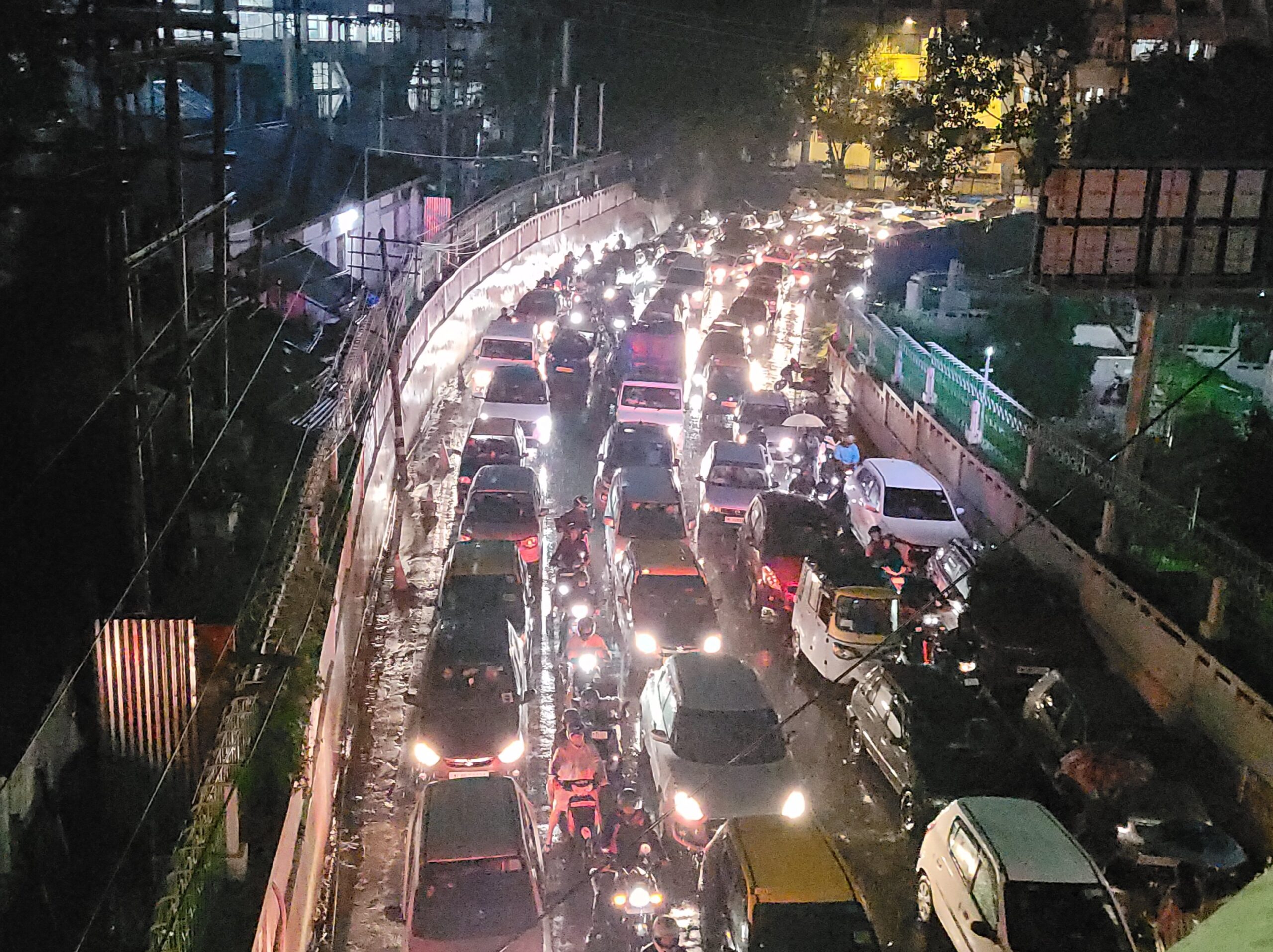Exclusive
Script Published here are subject to copyright
Shillong is grappling with severe traffic congestion. The state Government is planning to form an expert body to devise both short- and long-term solutions to address the severe traffic congestion in the state.
State Planning Board Chairman Metbah Lyngdoh revealed that around 23,000 vehicles travel daily from Shillong to Sohra, and 21,000 head towards Guwahati, contributing to significant traffic jams, especially at the entry and exit points of Shillong. An additional 8,000 vehicles travel to Jowai.
Talking to the MeghalayaNews 24, Lyngdoh said, “As far as traffic congestion is concerned, we have about 23,000 vehicles plying from Shillong to Sohra daily and around 21,000 to Guwahati. About 8,000 vehicles also travel to Jowai.”
“These numbers have caused significant congestion, especially at the entrance and exits of Shillong,” he said.
Chairing a state Planning Board meeting where PWD and Transport Department made a presentation, Lyngdoh announced plans to form an expert body to address this growing issue. “We are going to have an expert body with members who can work on viable solutions—whether short-term or long-term.”
He also emphasized that the State Planning Board would soon submit its report to the government, compiled from various line departments and their presentations. Lyngdoh added, “This is a continuous process. We cannot provide immediate solutions because we need input from multiple departments. It’s not just the home police; PWD, Urban, PHE, and Transport Departments all play a role. For instance, if the PWD wants to expand a road, it might face hurdles from the Forest Department or issues with water supply. We need to address these challenges comprehensively before submitting our recommendations.”
He reiterated the complexity of the problem, noting that congestion was exacerbated by commercial vehicles and inadequate infrastructure for their safe embankment and disembarkment. He also touched on the PWD’s role, acknowledging that “there are a few more areas of concern that need attention.”
Highlighting the need for detailed analysis, Lyngdoh said, “It’s not a one-day meeting where we can instantly arrive at a solution. Roads are essential, but so is the role of the police department. The current manpower is insufficient, with only 100 traffic personnel on the ground across Shillong, out of a total of around 150. Additional police constables are needed to manage the situation effectively, particularly at key junctions.”
Addressing the practicality of solutions, Lyngdoh raised concerns about space limitations. “You can’t just suggest building flyovers everywhere. Is the land available? What about road width, landing space, and takeoff space? All departments need to work side by side on these issues.”
On the matter of local taxis, he said, “We have around 3,800 taxis in the city, with about 1,500 to 2,000 operating daily, alongside a large number of private vehicles, which further adds to the congestion.”
He concluded by reiterating the need for expert advice, “We are working to identify experts who can help us find both short-term and long-term solutions to this traffic crisis.”


